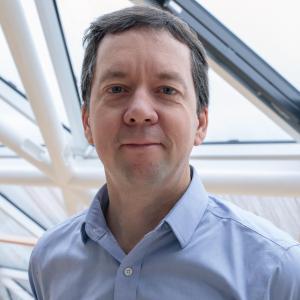EIB’s first bond sale using a digital currency signals that capital markets are eager to get access to this new technology
John Whelan works for a big international bank, but he thinks of himself first as an engineer. His latest engineering passions are cryptocurrencies and blockchains.
“I’m a true believer in the power of technology to change finance for the better of all of us,” says Whelan, who founded a digital lab at Banco Santander in Spain to study how blockchains and cryptocurrency can improve banking.
Banco Santander is one of three private banks that helped the European Investment Bank issue its first digital bond using blockchain technology. The €100 million bond was a big success after it was launched in April on the Ethereum platform. This platform has the second-largest digital currency in the world after the leader, Bitcoin. The other two banks that joined the deal are Société Générale of France and Goldman Sachs of the United States.
No longer just a theory
The sale is a big sign that capital markets are ready for blockchain technology. The expectation now is that more public and private banks will follow the EIB into this market and that bond sales, including green ones, will reach more investors on more platforms.
“We showed the world that this can be done with one of the largest multinational issuers in the world,” Whelan says. “This is no longer a theory. The proof of concept is over.”
The European Investment Bank’s digital bond is the first time a public bank worked with a group of private banks to sell bonds using blockchain. The European Investment Bank insisted on using a group of banks for its first digital bond, because it wanted the deal to resemble a traditional bond sale.

Using more digitalisation in the capital markets can reduce costs and increase transparency.
Lower costs and higher transparency
Organising a bond sale is complicated and time-consuming, especially when many banks are involved. Blockchains offer many advantages for large financial institutions that may issue billions of euros worth of bonds a year. They allow banks to streamline a lot of the requirements and paperwork that can take months to complete. Most of the documents related to underwriting, subscription and the distribution of bonds can be stored on a blockchain, speeding up every part of the process.
The digitalisation of capital markets also can reduce the fixed costs and increase transparency because it is easier to track trading flows and secondary market transactions.
“Many people are not aware of the benefits of blockchain technology,” says Richard Teichmeister, head of funding at the European Investment Bank. “The truth is that this has the potential to change the financial industry and may improve many people’s lives.”
The need for speed
Speed is another big avantage of blockchains, Teichmeister says, because so many tasks can be completed faster or avoided. In the future, some of the administrative jobs involved in issuing bonds, such as preparing the documentation and the settlement in the primary market, could be done within hours or even less time, instead of the days or weeks required today.

John Whelan, who founded a digital lab at Banco Santander, says blockchain technology will allow more small companies and individuals to get involved in the capital markets.
“Blockchain is part of the bigger story of an ever increasing transparency, digitalization, speed and efficiency,” adds Whelan, the cryptocurrency expert at the Spanish bank. “In the long run, this can make capital markets not just acceptable to big companies but to small firms and even individuals.”
Despite what some people believe, a blockchain is not the same thing as cryptocurrency. A blockchain is the technology that cryptocurrencies use to record and store transactions.
An easy way to think about a financial blockchain is to imagine a physical bank ledger that in the old days was used to record transactions and financial statements by hand. A blockchain is a digital version of this ledger that is stored online and replicated over a large group of computers in many locations. This replication and verification prevents false changes or hacking. Blockchains are often referred to as “distributed ledgers,” because they are sent to many participants who verify the data and ensure the accuracy of information.
What is a decentralized system?
The blockchain itself is just a list of records, called blocks, that record transactions and are linked together in a chain using cryptography. Each block contains a timestamp and transaction data. Blockchain is also known as a “decentralised” system, which means it is stored and duplicated on many computers. Every time a new transaction occurs on the blockchain, a record of that transaction is automatically verified by everyone.
A holiday analogy is a good way to describe the potential of blockchain, Teichmeister says.
“Thirty years ago, we went on holiday and sent home a postcard. One week letter, it arrives,” he says. “Today, we take a selfie, put it in an email or on social media, and it is transmitted in seconds. That’s the benefit that blockchain brings.”
Opening up the markets
Whelan of Banco Santaner is a true believer that this new technology can change finance in ways that help everyone. This latest transaction with the European Investment Bank is a big step in the right direction, he says.
“Public blockchains that nobody controls directly, that can be used to record all kinds of economic transactions between parties, are proving to be incredibly powerful,” he says. “They can help people and businesses everywhere. We have just scratched the surface of how they will be used.”
